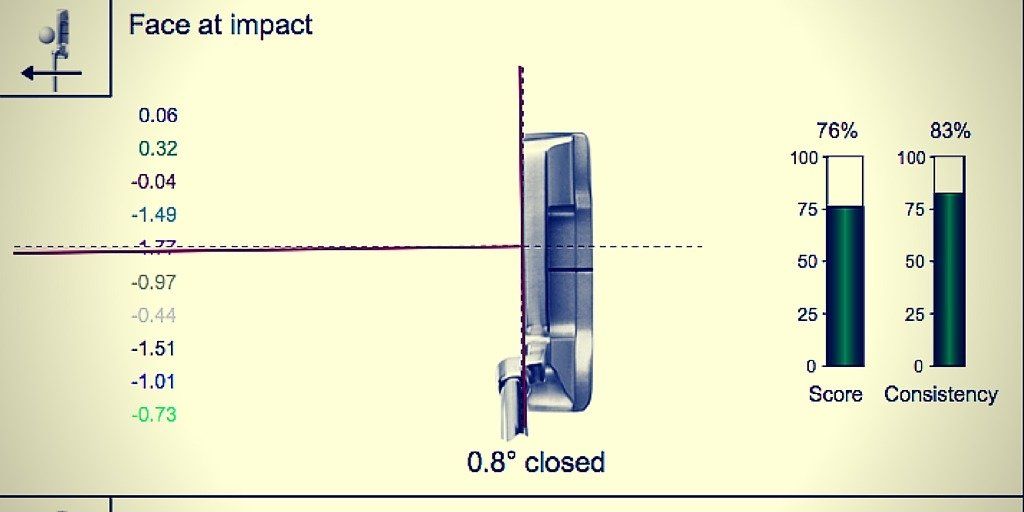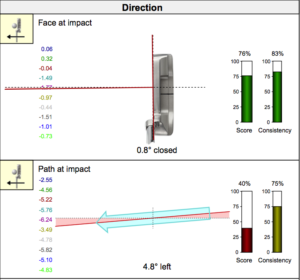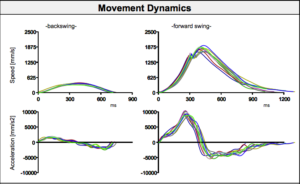
The putter is an interesting golf club, and it's unlike any other in your bag.
This is the club where you finalize your score for each hole. Every other club in the bag can help set you up for success, but the putter is where you are actually punching your ticket.
Some say putting is the most important part of the game. Others say it's overrated, and statistics suggest that although 40% of your strokes during your round might occur with the short stick, your score is mostly determined by your tee shots and approach shots.
I believe the truth is somewhere in the middle. Putting is important, and it's a part of the game where many golfers are throwing out shots unnecessarily (mostly through three putts). If you can figure out a way to control your speed and line more effectively, you will lower your scores.
Bonus Content:Be sure to check out my complete guide to putting.
Equipment love affair
Golfers love their putters. It's one of the clubs where they will splurge $200-$500 on beautifully-designed models like Scotty Camerons and many of the other craft manufacturers out there. Is this money well spent though? Is it actually going to help make them shave actual strokes off their score? Or is the $450 milled putter just as effective as the $50 one?
I've spoken to a few experienced club fitters about this issue, and many of them claim that getting fit for your putter can be your best option for actually lowering your scores with equipment changes. They've seen dramatic jumps in performance with golfers who had their strokes analyzed, and then were given the right putter for their particular tendencies.
This was a bit surprising to me, but after seeing other results with equipment refinements I could see why this might be the case.
Just like with other clubs, if you are making your purchase decisions based on looks and marketing claims, you are throwing caution to the wind.
Why would you get fitted?
I have never been fit for a putter. I have owned three putters in my life, and they were all purchased after making several practice strokes at a golf store. So I am like most consumers, and didn't do much research or testing.
I've always understood the benefits of getting fit for the right driver, irons, or wedges. However, I didn't quite get what would go on during a putter-fitting session.
So I booked a session with Sonny Burgo at Pete's Golf to have my stroke analyzed, and see what was actually going on with my putter, and if it was the right one for me. Sonny is certified by Science & Motion Sports (SAM Putt Lab), and has specialized his knowledge in fitting golfers with the right putters. He and the staff at Pete's are the go-to guys in the New York Metro area, and I'm happy to have such a terrific resource in helping me research these articles.
Before we got started I asked Sonny some overall questions about why you would get fitted for a putter, and what you can reasonably expect from a fitting session.
The overall impression that I got from him was that most golfers never even consider a putter fitting, and that it's easily the most overlooked club in the bag. People assume that it is a dull exercise that won't impact their scores much.
Sonny told me that the ultimate goal of a putter fitting is to improve your consistency. Golfers struggle with their putting because they can't strike their putts on the same part of the face most of the time. This results in the ball going off its intended line (a push or a pull), but more importantly they can't get the ball rolling at the right speed.
He and I both agree that being able to get your speed correct on the greens is the most important factor at improving your performance, and lowering your scores.
Being a great putter is mostly about proximity. Making putts outside of 5 feet is more difficult than most think (read this article to find out why). Golfers assume that making more putts is the key to lower scores, but for many players it's actually about leaving yourself shorter distances on your second putt, and limiting the dreaded three putt. This is actually one of the keys to Jordan Spieth's success.
So while it might be a bit unrealistic to assume that getting fit for the right putter will help you sink a ton of 15 footers for par or birdie, you can expect it to improve your ability to strike your putts on the same part of the face more often and improve your speed control.
This can be achieved a few different ways in a putter fitting:
- Getting the right type of putter head for your stroke (blade, mallets, etc)
- Changing the weighting of the putter (heel or toe biased)
- Lie Angle
- Loft
- Shaft length
In most cases Sonny says that getting the weighting correct is one of the most important factors. A few months ago he had a woman come in for a fitting, and almost every putt she hit was a few feet left of her intended target. She couldn't figure out how to fix it.
By changing the weight of the putter, and using a more upright lie angle, he was able to solve this issue without her having to change her actual technique.
Sometimes it's as simple as altering the putter to match the technique of the golfer. Other times a putter fitting might reveal that making a small change in your stroke can solve your issues, rather than change your equipment.
Either way, having a session can reveal these tendencies, and help golfers improve their consistency on the greens.
My Session
Sonny hooked me up to his SAM machine, which measures all of kinds of data about your putting stroke. I won't get into everything because it's certainly enough data to confuse you, but ultimately an experienced fitter can analyze a few key points and make a determination of your core issue.
After striking about 10-15 putts we were presented with a few pages of results. My consistency was fairly good, and I was mostly striking the ball on the same part of the face. So my main issue was not necessarily with my putter, but with what was going on with my stroke.
As you can see, my tendency was with my face at impact, and the path of my putter. They are both closed, which means that I am mostly pulling my putts (which was my guess before the session).

After looking a bit deeper into the results, it seems that things are mostly good on my backstroke, and at some point I am coming across the ball and closing the face at impact and even more on my follow through.

The last piece of the puzzle was solved by looking at my movement dynamics. At the moment of transition I am getting way to quick, and it's the reason I am shutting the club face. So it actually is my tempo that is part of the problem.

Luckily I had a solution handy! I opened up my Tour Tempo app on my phone, and started to play some of the putting beats, which try to get your stroke in a 2:1 ratio in the time it takes to complete your backswing to the moment of impact.
Within 2 minutes I was able to slow my stroke down by listening to the tones, and all of a sudden my putts were not registering with as much of a closed stroke. I went from almost 4.8 degrees to the left down to the 2 degree region, which was a dramatic improvement.
Since I am a more experienced player, and the folks at Pete's Golf run an ethical business, Sonny told me that he wouldn't necessarily try to get me a new putter. His recommendation was to try working on my stroke now that we knew the issue was with me closing the club face, and my tempo was likely the culprit.
What is your stroke like?
All fitting sessions end up being a combination of a lesson and evaluation of your equipment. I would have never suspected that my putting stroke actually looked like that had I not seen the results on the SAM analysis. Now that I know my issue, I can do some work to fix it and get my putter moving on a more square path at impact.
If my consistency was not as high with my stroke, it's possible that Sonny would have recommended that we choose a putter where we could control the weighting to help fix my issue. With some customers he has struggled to solve their technique issues, and that is where changing putters might be the fix.
The bottom line is that getting fit for the right putter can help you strike your putts more consistently. Is it going to eliminate 5-8 strokes from your score, and have you sinking putts left and right? No way!
However, it could easily drop 2-3 strokes by helping you keep the ball closer to your intended line, and getting you to strike the ball closer to the sweet spot. It might not sound like it, but that is a huge jump in performance without having to improve your swing.
I believe having this information is extremely important, which is why going for a putter fitting session might be worth it. The difference between a $100 and a $375 putter is probably negligible since technology has come a long way. However, the putter that is right for you will give you the best chance at consistently rolling putts at your intended target.
Many golfers are eternally searching for the right putter for their games, and often purchase multiple models when their results don't improve. They probably would be best served at having a fitting session, and find out what is actually going on with their stroke.
We care about the protection of your data Read our Privacy Policy